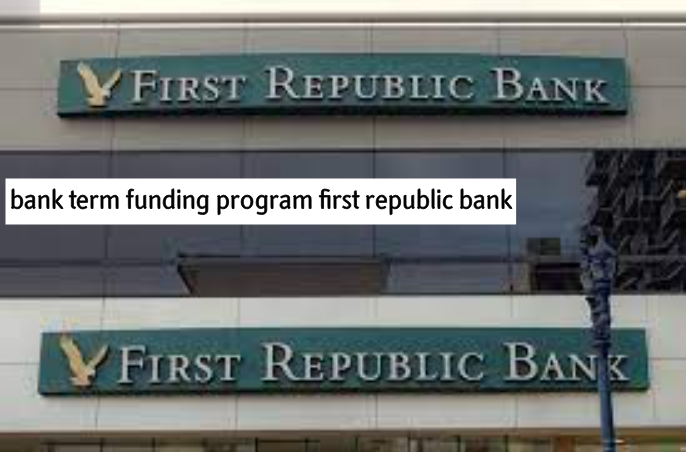bank term funding program first republic bank

Bank Term Funding Program: What It Means for First Republic Bank
The Federal Reserve recently launched a new program to provide additional liquidity to eligible depository institutions amid the ongoing financial crisis. The Bank Term Funding Program (BTFP) is designed to help banks meet the needs of their depositors and ensure the stability of the banking system. In this article, we will explain what the BTFP is, how it works, and how it affects First Republic Bank, one of the largest regional banks in the U.S.
What is the BTFP?
The BTFP is a temporary lending facility that offers loans (called advances) to banks, savings associations, credit unions, and other eligible depository institutions. The loans are secured by high-quality securities, such as U.S. Treasuries, agency debt and mortgage-backed securities, and other qualifying assets. The eligible collateral must have been owned by the borrower as of March 12, 2023.
The BTFP has several features that make it attractive for eligible borrowers:
– The loans have a term of up to one year, which provides longer-term funding than other existing facilities.
– The loans have a fixed interest rate that is based on the one-year overnight index swap rate plus 10 basis points (bps), which is lower than market rates for similar instruments.
– The loans have no fees or prepayment penalties, which gives borrowers flexibility to repay or refinance them at any time.
– The loans are valued at par and have a 100% margin requirement, which means that borrowers can borrow up to the full value of their pledged collateral without any haircut or discount.
The BTFP is backed by up to $25 billion from the Exchange Stabilization Fund (ESF), which is a reserve fund managed by the Department of Treasury. However, the Federal Reserve does not expect to use these funds as it has ample resources to support the BTFP.
Why did the Federal Reserve create the BTFP?
The Federal Reserve created the BTFP in response to the unprecedented liquidity challenges faced by some banks in recent weeks. These challenges were triggered by several factors:
- The failure of Silicon Valley Bank (SVB), Signature Bank (Signature), and other smaller banks due to their exposure to risky crypto assets and fintech companies.
- The panic among depositors who withdrew their funds from these banks and other institutions that were perceived as vulnerable.
- The difficulty for some banks to access funding from other sources due to market disruptions and increased risk aversion.
These factors created a vicious cycle that threatened to destabilize the banking system and disrupt money and credit flows in the economy. To prevent this scenario from happening, the Federal Reserve intervened with several measures:
- It provided emergency liquidity assistance to SVB and Signature through its discount window before they were taken over by JPMorgan Chase & Co. (JPM) and Wells Fargo & Co. (WFC), respectively.
- It increased its open market operations (OMO) by purchasing more securities from primary dealers and expanding its repo operations with eligible counterparties.
- It launched new facilities such as Commercial Paper Funding Facility (CPFF), Money Market Mutual Fund Liquidity Facility (MMLF), Primary Dealer Credit Facility (PDCF), Term Asset-Backed Securities Loan Facility (TALF), Primary Market Corporate Credit Facility (PMCCF), Secondary Market Corporate Credit Facility (SMCCF), Municipal Liquidity Facility (MLF), Main Street Lending Program (MSLP), Paycheck Protection Program Liquidity Facility (PPPLF), etc., each targeting different segments of financial markets.
- It announced unlimited quantitative easing (QE) by buying unlimited amounts of Treasury securities and agency mortgage-backed securities until market conditions improve.
The BTFP was one of these measures aimed at providing additional funding options for eligible depository institutions. By offering longer-term loans at favorable rates against high-quality collateral, the BTFP helps these institutions maintain their liquidity positions, meet their depositor obligations, and continue lending activities.
How does First Republic Bank benefit from the BTFP?
First Republic Bank is one of the largest regional banks in the U.S., with over $150 billion in assets and over $130 billion in deposits as of December 31, 2022. It operates mainly in California, New York, Massachusetts, Florida,
and Oregon, offering private banking, wealth management, and business banking services.







